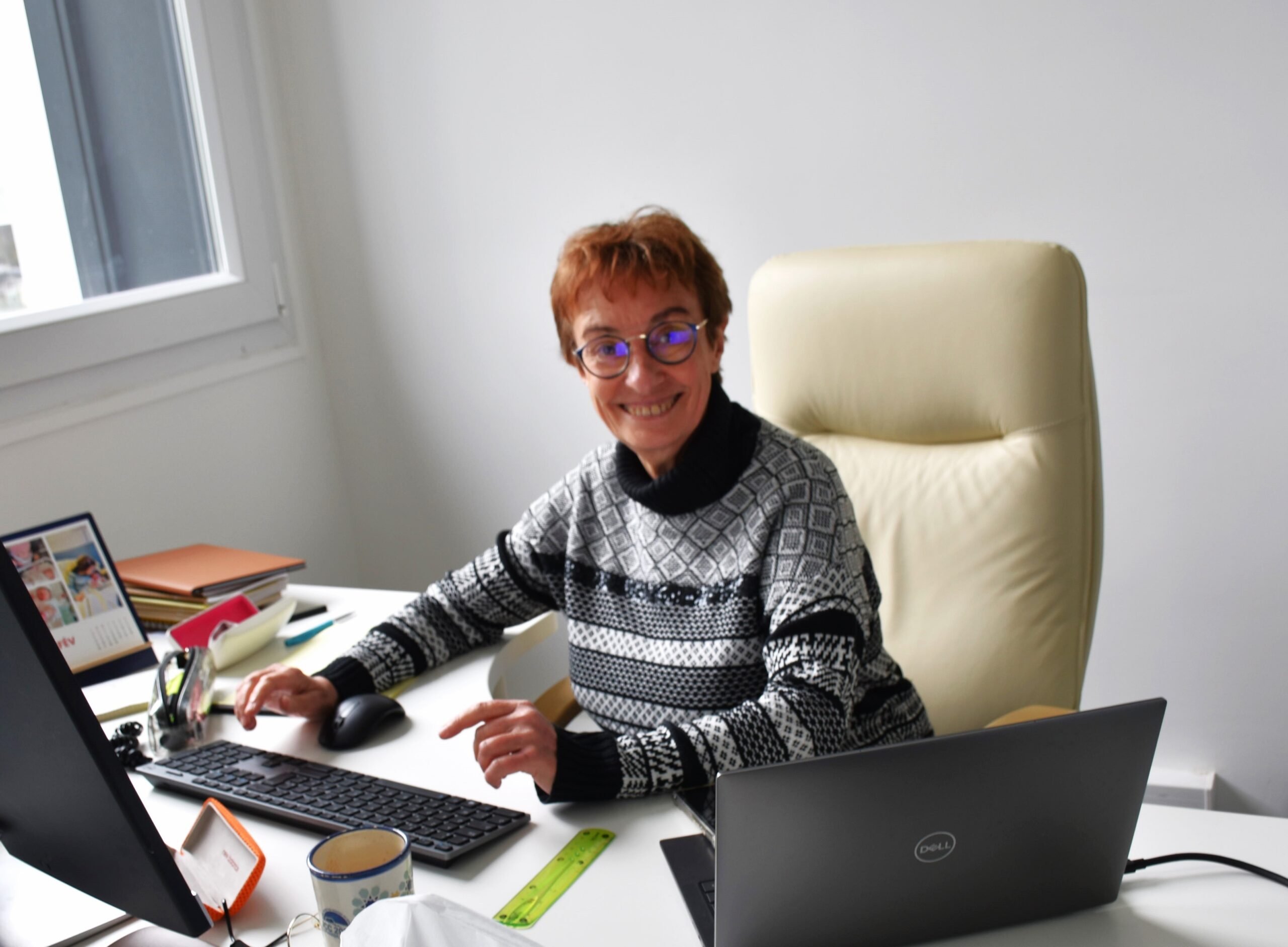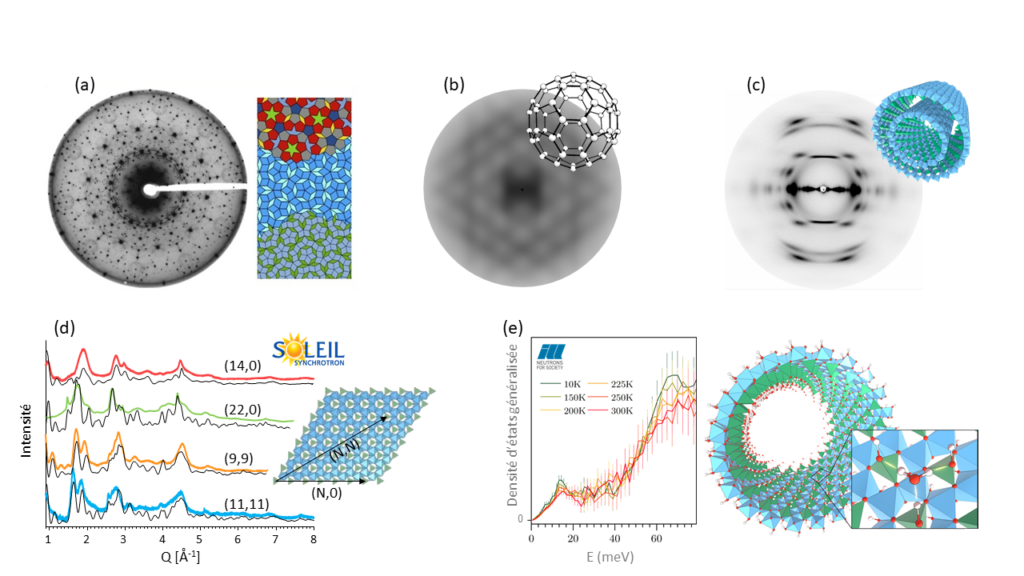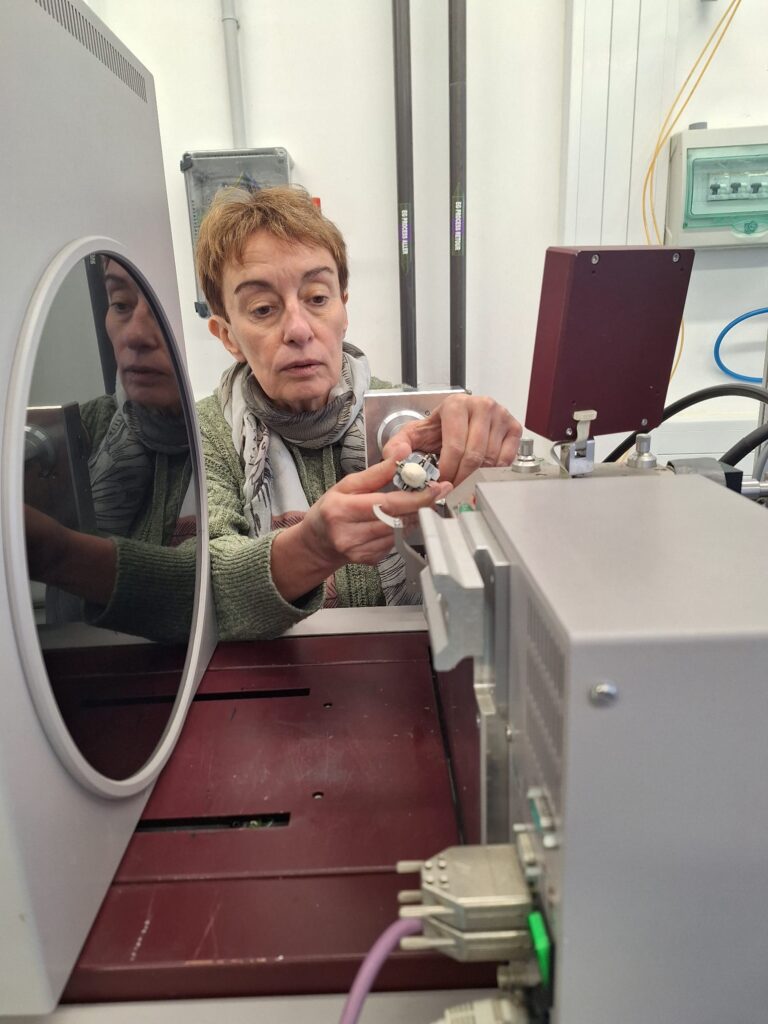
| Pascale Launois, CNRS Research Director at the Laboratoire de Physique des Solides d’Orsay, has been awarded the “André Guinier” prize by the Association Française de Cristallographie. |
Throughout her career, Pascale has explored original forms of matter, such as quasicrystals and carbon nanotubes. Her specialty, X-ray and neutron scattering, has enabled her to better understand the structure of nano-objects, and even to control them, for example by encapsulating fullerenes in nanotubes. Her current research focuses on environmental issues, such as hydrogen storage in nanoclays, water flow through nano-channels, or the design of “green” carbon fibers from wood compounds.
She looks back at some of the key moments in her career and shares her vision of research.
– Why did you choose a career as an experimenter when you had trained in theoretical physics?
I was very interested in theoretical physics, and it’s easier to acquire a grounding in experimentation than in theory after graduating. That’s why I chose to do a master 2 in theoretical physics. And research is by its very nature a difficult field, characterized by uncertainty. I thought that by being an experimenter, I’d have a solid grounding: the contribution of experiments!
– And why did you choose crystallography?
I chose solid state physics, and the study of structure and dynamics (crystallography) because it involves working in small teams, with a global vision, from experiment to modeling or simulation of experimental data. Many people think that crystallography is all about finding the positions of atoms in well-ordered crystals. In reality, I’ve never done that! My first interest was in quasicrystals, which had just been discovered. These are long-range ordered systems with a symmetry that is forbidden in crystallography. I studied their phase transitions. I also studied fullerene molecules, and the way they orientate themselves over short distances, using diffuse X-ray scattering. And finally, I study the structure of nano-objects, where the range of order is limited by the size of the object.
– Do you remember a special moment in your early career?
Yes, during my thesis, I was working in a neutron-producing reactor, on spectrometers that were much bigger than I was. One night, I was able to climb to the top of the reactor and watch the magnificent blue radiation from its core in the pool! That was another time! We don’t move around reactors as freely now. Since those first experiences during my thesis, I’ve always felt just as happy when I walk into a neutron reactor to do an experiment.
– What have been the most important encounters in your career?
I was marked by my meeting with Marianne Lambert, who encouraged me during my thesis, and then proposed that I study quasicrystals and their approximants at the Laboratoire de Physique des Solides (LPS). It was a change of both theme and experimental method, with X-ray scattering. I also remember interdisciplinary encounters, for example with Sophie Lanone and Jorge Boczkowski from INSERM, with whom I worked on the toxicity of carbon nanotubes. Interdisciplinarity requires us to assimilate a new language and to help others understand our own… It makes for exciting changes! The role of PhD students and post-docs is also very important. It’s stimulating to share our knowledge with them, and they make an important contribution to our research. I’m thinking of Colin Bousige and Geoffrey Monet, for example, both of whom won prizes for their theses. I don’t teach, but passing on knowledge through mentoring is something I really enjoy.
– What is your relationship with popularization and the general public?
I’m very attached to popularization. For example, I was heavily involved in promoting crystallography during the International Year of Crystallography in 2014. In particular, I gave a talk that’s especially close to my heart, on Rosalind Franklin and the discovery of the structure of DNA. It tells the story of a scientist at a time when women could attend lectures at Cambridge but were not allowed to be members of the university. Rosalind Franklin only graduated from Cambridge retroactively, when the university evolved after the Second World War! It also tells a story where ethics were unfortunately not respected. I’ve given this talk at town halls, science festivals, universities and high schools. I believe that popularizing science is very important, especially in light of what happened during the COVID-19 period. The way some scientists failed to distinguish between working hypotheses and research results gave research a bad name. We also need to popularize the scientific method.
– What does receiving the “André Guinier” award mean to you?
It’s a great pleasure and an honor to receive this award. What’s more, André Guinier is one of the three founders of the Laboratoire de Physique des Solides, and it was he who set up my own research group at the LPS. This prize is a reward for my research work, but it is also the fruit of the many exciting collaborations I have had with colleagues, as well as the work carried out with my doctoral and post-doctoral students. It’s very important to say that research is also a team work!

Pascale Launois’ career path, from incommensurate phases to nanotubes and green carbon fibers.
Pascale Launois is a specialist in X-ray and neutron scattering by solids and fluids, and the modeling of experimental results.
Early in her career, Pascale Launois completed a PhD thesis at the Laboratoire Léon Brillouin, on inelastic neutron scattering for the study of incommensurate phases. She then entered the CNRS and she joins the Laboratoire de Physique des Solides (LPS). Under the guidance of Marianne Lambert, a former student of André Guinier, she studied quasicrystals using X-ray scattering. She receives the CNRS bronze medal for her work on incommensurable phases and approximate phases in quasicrystals.

She then decided to study fullerenes, extremely symmetrical molecules of sixty carbon atoms, in collaboration with Roger Moret and Sylvain Ravy. In the early 2000s, she turned her attention to carbon nanotubes, emblematic objects of nanoscience. She studied their growth mechanisms in collaboration with Martine Mayne’s team at the CEA, the properties of carbon fibers with Philippe Poulin and Cécile Zakri’s team at the Centre de Recherche Paul Pascal, and the structure and dynamics of nanotubes filled with molecules such as fullerenes, with Stéphane Rols, her close collaborator at the Institut Laue Langevin (ILL). With her collaborators, including Philippe Poulin and Cécile Zakri, she was awarded the “Prix de la Recherche” by the French magazine La Recherche, for the work on carbon nanotube fibers.
She is also interested in other inorganic nanotubes, working with Stéphane Rols at ILL to study the peculiar properties of water confined in these nanotubes, with Erwan Paineau at LPS, who synthesizes them and has shown that they can be used to produce hydrogen by photocatalysis, and with Stéphan Rouzière to study them under pressure.
In recent years, her fundamental research has focused on environmental issues. She is studying the structuring and diffusion of water in inorganic nanotubes, hydrogen storage in nanoclays, and the possibility of producing “green” carbon fibers from lignin, a wood compound.
In conclusion, Pascale Launois has used X-ray and neutron scattering to explore new forms of matter at the nanometer scale, from fundamental physics to potential applications.
Interview conducted by Siham Benhabib and co-edited with Julien Bobroff.
